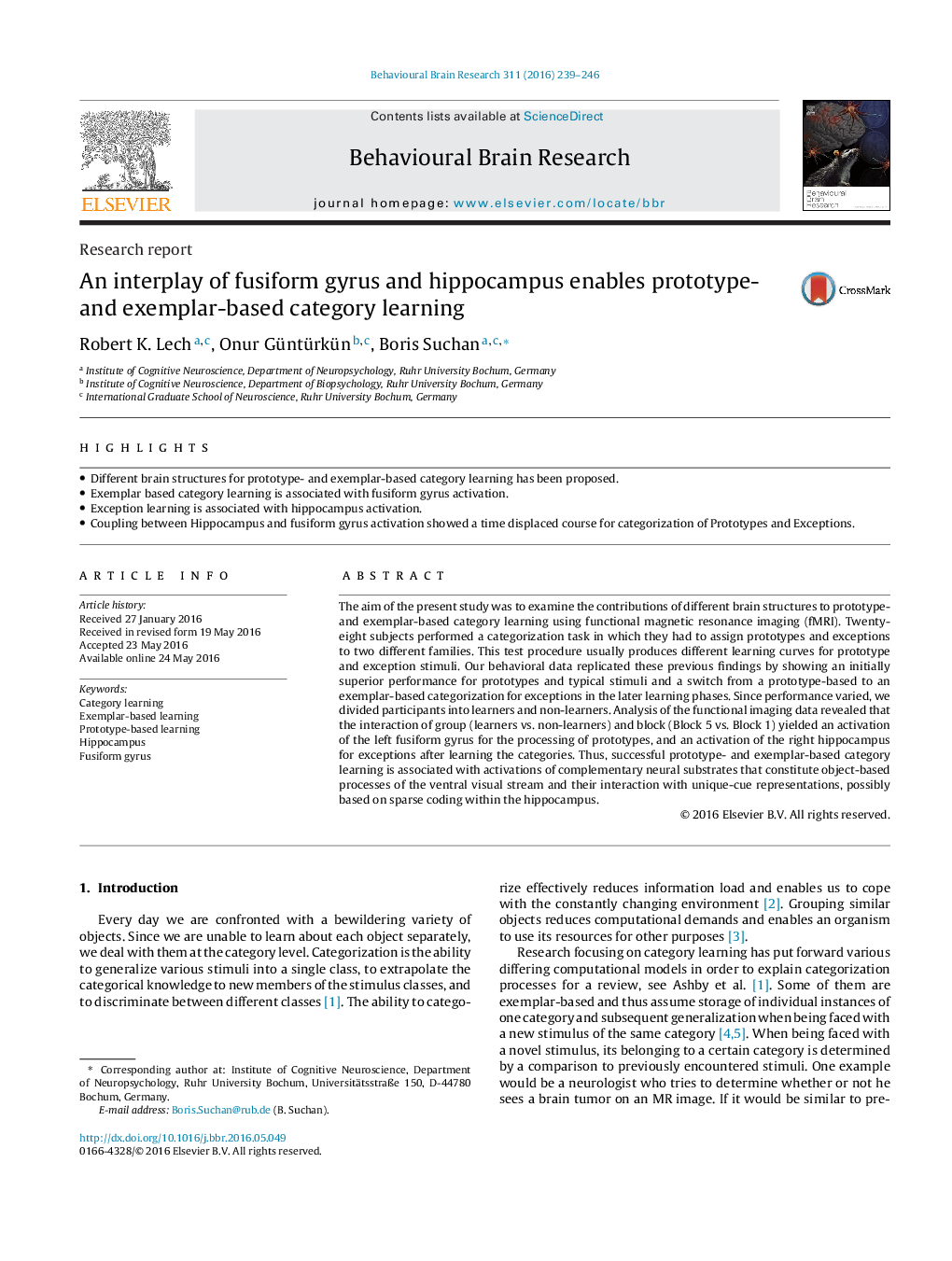| Article ID | Journal | Published Year | Pages | File Type |
|---|---|---|---|---|
| 6255935 | Behavioural Brain Research | 2016 | 8 Pages |
â¢Different brain structures for prototype- and exemplar-based category learning has been proposed.â¢Exemplar based category learning is associated with fusiform gyrus activation.â¢Exception learning is associated with hippocampus activation.â¢Coupling between Hippocampus and fusiform gyrus activation showed a time displaced course for categorization of Prototypes and Exceptions.
The aim of the present study was to examine the contributions of different brain structures to prototype- and exemplar-based category learning using functional magnetic resonance imaging (fMRI). Twenty-eight subjects performed a categorization task in which they had to assign prototypes and exceptions to two different families. This test procedure usually produces different learning curves for prototype and exception stimuli. Our behavioral data replicated these previous findings by showing an initially superior performance for prototypes and typical stimuli and a switch from a prototype-based to an exemplar-based categorization for exceptions in the later learning phases. Since performance varied, we divided participants into learners and non-learners. Analysis of the functional imaging data revealed that the interaction of group (learners vs. non-learners) and block (Block 5 vs. Block 1) yielded an activation of the left fusiform gyrus for the processing of prototypes, and an activation of the right hippocampus for exceptions after learning the categories. Thus, successful prototype- and exemplar-based category learning is associated with activations of complementary neural substrates that constitute object-based processes of the ventral visual stream and their interaction with unique-cue representations, possibly based on sparse coding within the hippocampus.
